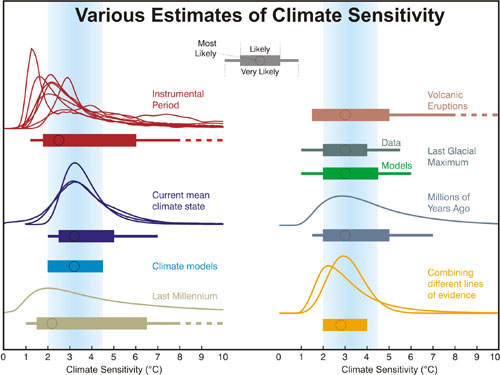I do know better which is why I question the catastrophic predictions.
I understand that there are always plenty of unaccounted for variables on the bleeding edge, it is the nature of the beast!
On my first job out of University, I worked on the team that developed the worlds first fiber optic marine seismic system.
The technology was quite crude in the early 80's and we had to build and test the electronics from components, in addition to the harsh offshore environment
When you talk about the majority of the data, you are speaking of multiple control runs, where the variable assumptions are fixed, and the output varies,
in the case of AGW this is not the case, the spread is based on different assumptions used for the input.
The graphic you posted earlier attests to this. Each represents a different methodology and different variables.
In R&D we are usually tying to solve some problem, One of my projects had me looking for fiber optic jacket material
that would work over the full range of land seismic crews operating temperature, as opposed to warm weather and cold weather cables.
The top one inch of air, gets both very cold and very hot. Thermoplastics that are pliable at the cold temperature
loose integrity at high temperatures, and those that hold up at high temperatures, are brittle and cause excessive attenuation at low temperatures.
Alas, real R&D is 90% failure and 10% success.



